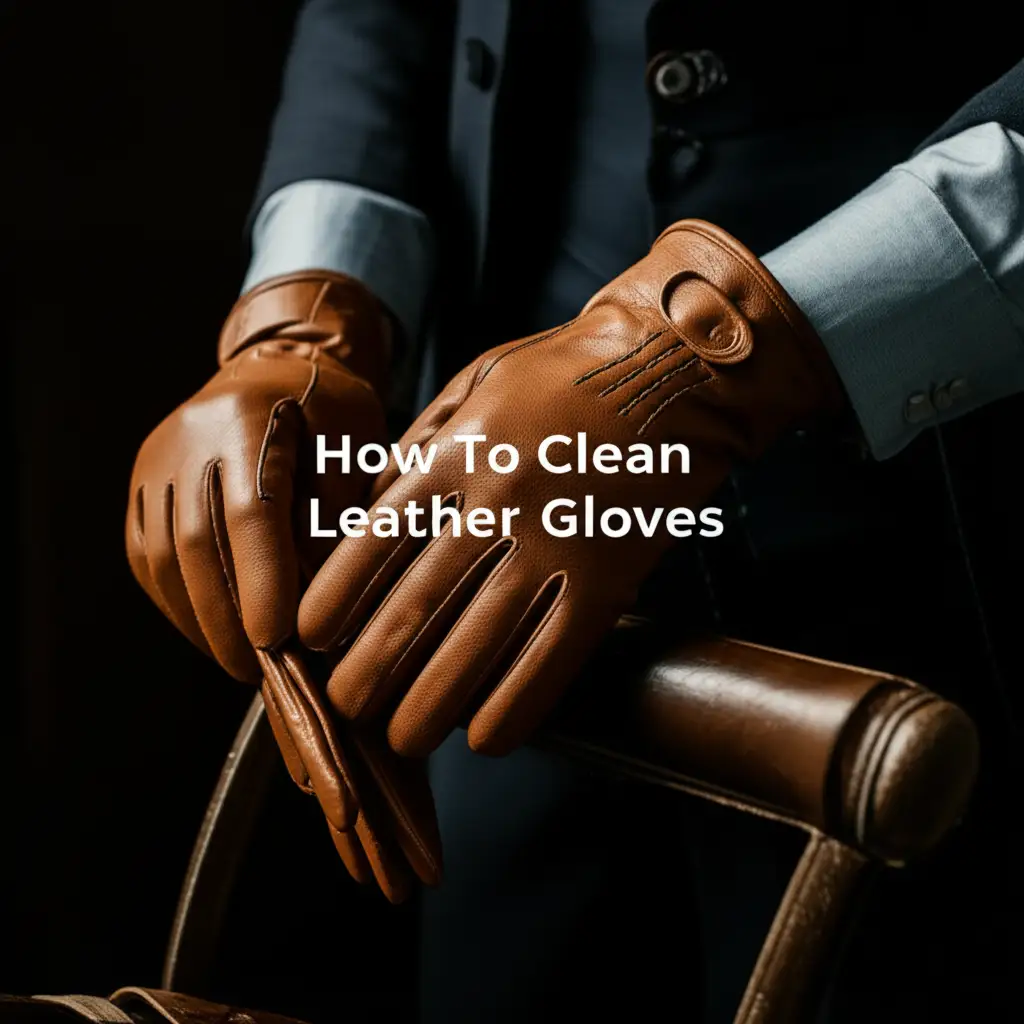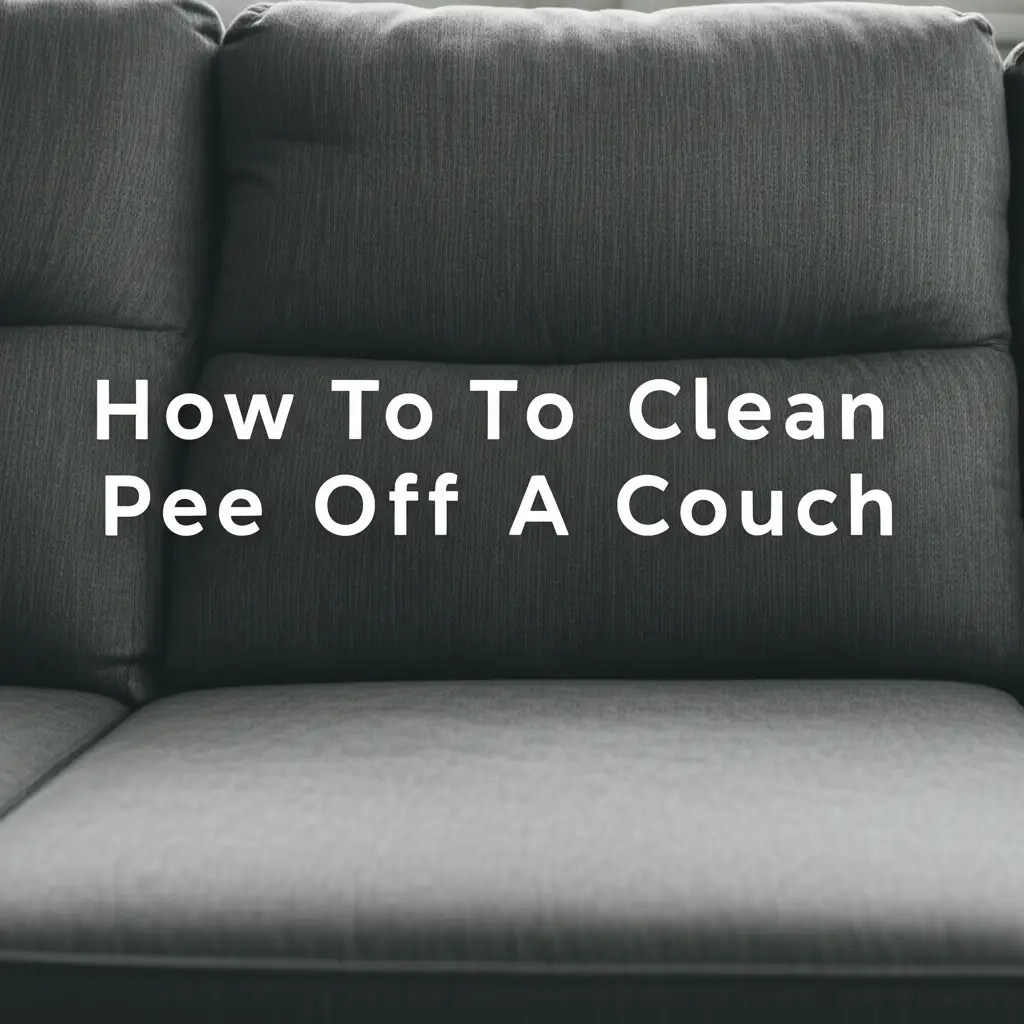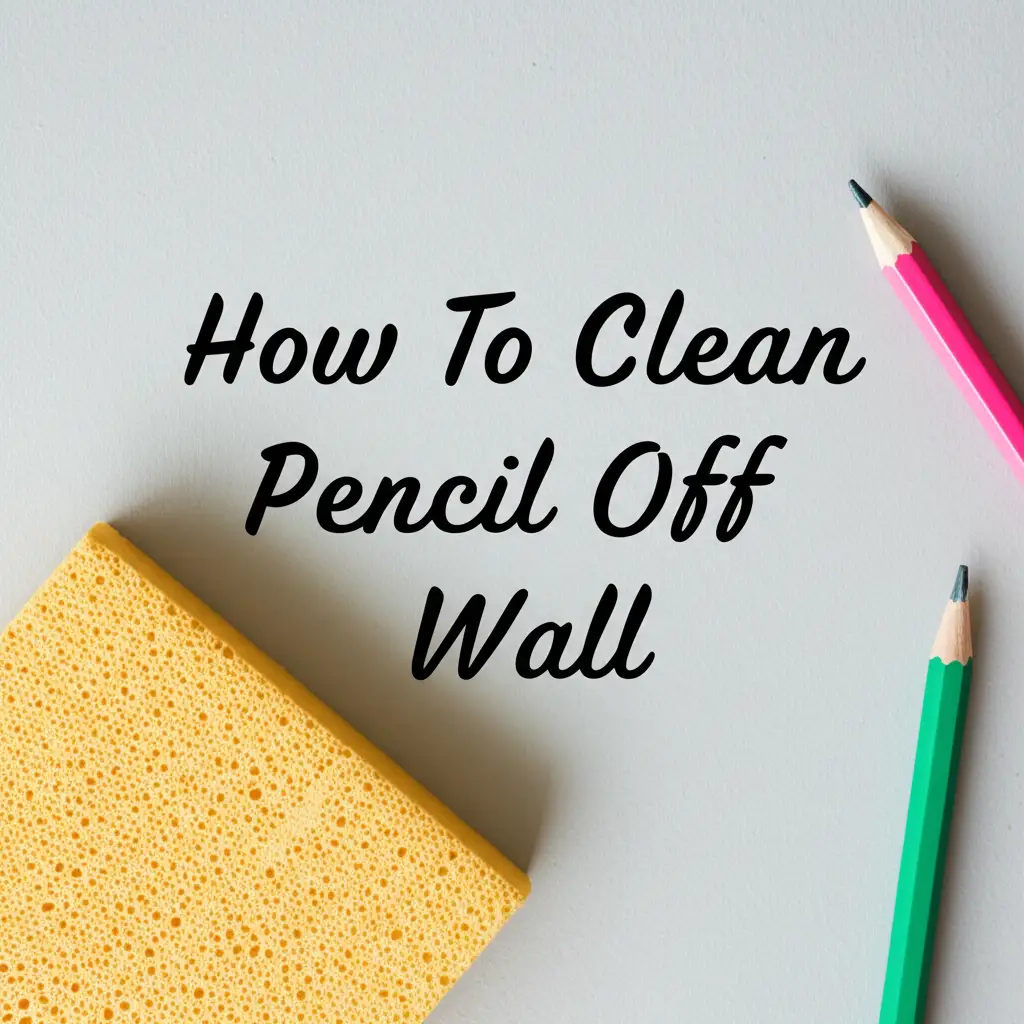· Home Cleaning · 15 min read
How To Clean Leather Gloves

How To Clean Leather Gloves: Your Full Guide
Leather gloves bring a touch of class and provide practical protection. They keep your hands warm in winter, offer grip for driving, or add flair to your outfit. However, like any cherished item, they get dirty over time. Dust, grime, oils from your skin, and even accidental spills can dull their appearance and shorten their life. Knowing how to clean leather gloves correctly helps you keep them looking their best. Proper cleaning not only removes dirt but also maintains the leather’s softness and extends the gloves’ usability. This guide covers everything you need to know about cleaning, conditioning, and caring for your leather gloves. We will discuss gentle cleaning methods, stain removal tips, and essential aftercare.
Takeaway
Keeping your leather gloves clean and soft means using gentle methods and proper aftercare.
- Always test cleaning solutions on a hidden spot first.
- Use mild soap and a damp cloth for general dirt.
- Treat specific stains quickly and carefully.
- Condition the leather after cleaning to restore moisture.
- Air dry gloves away from direct heat, reshaping them as they dry.
- Store gloves properly to prevent damage and maintain their shape.
To clean leather gloves, gently wipe them with a damp cloth and mild soap, focusing on dirty areas. Rinse the cloth and wipe again to remove soap. Condition the leather with a specialized product. Allow the gloves to air dry away from heat, shaping them as they dry.
Understanding Your Leather Gloves Before Cleaning
Before you start cleaning, it helps to understand your leather gloves. Leather comes from animal hides, treated and processed to create different finishes. Common types for gloves include aniline, semi-aniline, and pigmented leather. Aniline leather is soft and natural, showing its true grain, but it stains easily. Semi-aniline leather has a light protective coating, offering more stain resistance while keeping some natural feel. Pigmented leather has a heavier coating, making it durable and very stain-resistant, though it feels less natural.
Knowing your leather type helps you choose the right cleaning method. A strong cleaner that works on pigmented leather might damage delicate aniline leather. Always check the care tag if your gloves have one. Most quality leather gloves last many years with good care. They need cleaning to remove surface dirt and oils that can break down the leather fibers over time. Regular cleaning keeps the leather supple and stops it from cracking. This step ensures you treat your specific gloves with the correct level of care.
Understanding leather also means knowing its vulnerabilities. Leather is a natural material that needs moisture to stay flexible. If it dries out, it becomes stiff and brittle. Water can leave spots or cause the leather to shrink. Harsh chemicals can strip natural oils, leading to permanent damage. This is why gentle cleaning products are always the best choice for leather.
Finally, think about how you use your gloves. Are they driving gloves that see a lot of hand oils? Or winter gloves that encounter snow and salt? The frequency of use and exposure to elements will influence how often you need to clean them. Proper care starts with knowing your material and its specific needs.
Gathering Your Cleaning Supplies
Having the right tools ready makes the cleaning process smooth. You do not need many special items to clean leather gloves. Most supplies are common household items. This preparation step saves you time and ensures you can finish the job without interruption. I always lay out everything before I begin.
First, you need a mild soap. This can be a gentle hand soap, baby shampoo, or a specialized leather cleaner. Avoid harsh detergents or cleaners with strong chemicals. These can strip the natural oils from the leather and cause damage. A good pH-neutral soap works best.
Next, you need several clean, soft cloths. Microfiber cloths are ideal because they are absorbent and will not scratch the leather surface. You might need one for cleaning and another for rinsing. Small, soft brushes, like a toothbrush or a suede brush (if applicable, but generally avoid for smooth leather), can help with dirt in seams.
A bowl of clean, lukewarm water is essential for diluting your soap and rinsing your cloths. Do not use hot water, as it can harm the leather. For conditioning, you will need a leather conditioner. This product restores moisture and keeps the leather supple after cleaning. You can find these at most shoe stores or online.
For specific stains, you might need rubbing alcohol or cornstarch. We will talk more about these later. Finally, have a clean towel ready for blotting and a place where your gloves can air dry. I also recommend a pair of glove shapers or crumpled paper to help maintain the glove’s form during drying. Having these supplies ready prevents a mid-clean scramble.
Pre-Cleaning Steps: Preparing Your Gloves
Preparation is crucial before you start applying any liquids to your leather gloves. Skipping these steps can lead to uneven cleaning or even damage. I always take my time with this part. This ensures the best results when you clean leather gloves.
First, remove any loose dirt or debris from the gloves. You can do this by gently brushing the gloves with a soft brush or a dry cloth. Pay attention to seams and crevices where dirt likes to hide. For heavily soiled gloves, you might gently shake them out. This removes small particles that could scratch the leather during washing.
Next, perform a spot test with your chosen cleaning solution. This is perhaps the most important step. Apply a tiny amount of your mild soap solution to an inconspicuous area of the glove. A good spot is often inside the cuff or on a small seam. Wait a few minutes to see how the leather reacts. Look for any discoloration, shrinking, or damage. If the leather seems fine, you can proceed with confidence. If you notice any negative changes, choose a different cleaning product.
Make sure your hands are clean before you handle the gloves. Oils from your hands can transfer to the leather, creating new marks. You might even wear thin cotton gloves yourself to protect the leather from your skin oils. This careful preparation sets the stage for a successful cleaning process.
Gentle Cleaning Methods for Leather Gloves
Once your gloves are prepared, you can begin the actual cleaning. The goal is to be gentle to avoid damaging the leather. There are a few methods you can use depending on how dirty your gloves are. I usually start with the least aggressive method.
For light dirt and general grime, a simple wipe-down often works well. Mix a few drops of mild soap with lukewarm water in a bowl. Dampen a clean, soft cloth with this solution. Wring out the cloth very well; it should be damp, not wet. Gently wipe the surface of your leather gloves. Use light, circular motions. Do not scrub hard. Pay attention to areas that get touched most, like the fingertips and palms.
After cleaning a section, rinse your cloth with clean water and wring it out again. Wipe the same area to remove any soap residue. Soap left on the leather can dry it out or leave a film. Repeat this process until you have cleaned both gloves thoroughly. This method works well for regular maintenance. For more general leather cleaning, consider checking out guides on how to clean leather clothes or how to clean leather boots for related tips.
If your gloves are quite dirty, you might try a slightly more immersive approach. You can gently wash them by hand. Fill a basin with lukewarm water and a small amount of mild leather cleaner or baby shampoo. Submerge the gloves one at a time. Gently knead the gloves in the soapy water for a minute or two. Do not wring or twist them hard. Drain the soapy water and refill the basin with clean, lukewarm water. Rinse the gloves thoroughly until all soap is gone. Gently squeeze excess water out, supporting the glove’s shape. Remember, the key is always gentleness.
Dealing with Common Stains on Leather Gloves
Sometimes, gloves get more than just general dirt; they get specific stains. Dealing with these requires a targeted approach. Acting quickly is important when a fresh stain occurs. Different types of stains respond to different treatments.
For oil or grease stains, immediate action helps. Sprinkle a generous amount of cornstarch, talcum powder, or baking soda over the stain. Let it sit for several hours, or even overnight. The powder will absorb the oil. Then, gently brush off the powder with a soft cloth or brush. Repeat if needed. This method often works wonders on fresh oil spots.
Ink stains are notoriously difficult on leather. For small, fresh ink marks, you can try dabbing with a cotton swab dipped in rubbing alcohol. Be extremely careful. Test in an hidden area first, as alcohol can damage some leather finishes. Dab gently, do not rub, and blot immediately with a clean, dry cloth. Work from the outside of the stain inwards to avoid spreading it. For stubborn ink stains, professional help might be best. We have more detailed advice on how to clean ink off leather that applies to various leather items.
For mold or mildew spots, mix equal parts water and rubbing alcohol. Dampen a cloth with this solution. Gently wipe the moldy area. This helps kill the mold and removes the visible spots. Let the area air dry completely. For more extensive mold issues, such as those found on jackets, you can learn more about how to clean mold off leather jacket.
Sunscreen or paint can also stain leather. For sunscreen, similar methods to oil stains may work, using absorbent powders. For paint, if it’s fresh and water-based, a damp cloth might suffice. If it’s dry or oil-based, it becomes much harder. You can find more specific guidance on how to clean sunscreen off leather or how to clean paint off leather for detailed instructions that can be adapted for gloves. Always remember to test any stain removal method on a hidden spot first.
Conditioning Your Leather Gloves After Cleaning
Cleaning removes dirt, but it can also strip some of the natural oils from the leather. Conditioning is a vital step to restore moisture and keep your gloves soft and supple. Skipping this step can lead to stiff, cracked leather. I never miss this part when I clean leather gloves.
Choose a high-quality leather conditioner specifically made for garments or accessories. Avoid using petroleum-based products or heavy oils, as these can clog the leather’s pores or leave a greasy residue. A good conditioner will penetrate the leather, hydrating it from within.
Apply a small amount of conditioner to a clean, soft cloth. Start with a pea-sized amount. Gently rub the conditioner into the leather using circular motions. Cover the entire surface of both gloves evenly. You should see the leather absorb the product. Do not over-apply; a thin, even coat is better than a thick one. If you put too much, the leather can feel greasy.
After applying the conditioner, let the gloves sit for about 15-20 minutes. This allows the leather to fully absorb the product. Then, take another clean, dry cloth and gently buff the gloves. This removes any excess conditioner and brings out a natural sheen. The gloves should feel noticeably softer and more flexible. This conditioning process helps to extend the life of your gloves.
Regular conditioning, even between full cleanings, is also a good practice. If your gloves feel dry, apply a small amount of conditioner. This proactive care prevents the leather from drying out. Just like our skin, leather needs consistent moisture.
Drying and Storing Leather Gloves Properly
Proper drying and storage are just as important as cleaning for maintaining your leather gloves. Incorrect drying methods can cause the leather to shrink, stiffen, or crack. Storing them poorly can ruin their shape.
After cleaning and conditioning, gently blot any excess moisture from the gloves with a clean towel. Do not wring or twist the gloves forcefully, as this can distort their shape. The goal is to remove surface water without stressing the leather.
Next, reshape the gloves. You can gently put your hands into them to stretch and smooth out any wrinkles. Remove your hands and place the gloves on a clean, dry surface. Many people insert glove shapers or loosely crumpled paper (like tissue paper or paper towels) inside the gloves. This helps them keep their form as they dry. Avoid using newspaper, as the ink can transfer to the leather.
Always air dry leather gloves. Keep them away from direct heat sources like radiators, heaters, or direct sunlight. High heat causes leather to dry too quickly, leading to shrinkage and cracking. A cool, well-ventilated area is ideal. It might take several hours, or even a full day, for the gloves to dry completely. During the drying process, check on them occasionally and gently reshape them again if needed. Flexing them gently can also help prevent stiffness.
Once completely dry, store your leather gloves in a cool, dry place. Avoid plastic bags, which can trap moisture and promote mold growth. A breathable cotton bag or a drawer is suitable. Keeping them laid flat or with glove shapers inserted helps maintain their form. Proper storage protects your cleaning efforts and ensures your gloves are ready for their next use.
Maintaining Your Leather Gloves Regularly
Regular maintenance is key to keeping your leather gloves in top condition and reducing the need for deep cleaning. Small, consistent efforts can significantly extend their lifespan. I find that quick, frequent care saves a lot of work later on.
After each use, especially if they have been exposed to dirt or moisture, give your gloves a quick wipe. Use a soft, dry cloth to brush off any surface dust or light grime. This prevents dirt from building up and becoming embedded in the leather. For light rain, simply let them air dry naturally, away from heat.
Consider using a leather protectant spray. These sprays add a barrier to the leather, helping to repel water and resist stains. Apply it according to the product instructions, usually every few months. Always test the spray on a hidden area first to ensure it does not alter the leather’s appearance. A protectant forms an invisible shield.
Avoid exposing your leather gloves to extreme conditions when possible. Prolonged sun exposure can fade and dry out the leather. Heavy rain can cause water spots and stiffness. If your gloves do get soaked, follow the proper drying steps outlined earlier. Do not use them for tasks that could severely damage the leather, like heavy gardening or working with harsh chemicals.
Store your gloves correctly when not in use. This means keeping them in a drawer or a box where they will not be crushed or creased. Avoid hanging them by clips, which can leave marks. For long-term storage, ensure they are clean and conditioned before putting them away. This routine maintenance keeps your gloves looking great and ready for many years of use.
FAQ Section
Q1: Can I put my leather gloves in a washing machine? A1: No, you should never put leather gloves in a washing machine. The harsh agitation, hot water, and strong detergents in a washing machine can cause leather to shrink, crack, and lose its natural oils. Always clean leather gloves by hand using gentle methods. Machine washing will cause irreversible damage to the leather.
Q2: How often should I clean my leather gloves? A2: The frequency depends on how often you wear them and how dirty they get. For light use, a simple wipe-down every few weeks might be enough. If you wear them daily or they get very dirty, a more thorough cleaning every few months is good. Regular conditioning is important too.
Q3: What if my leather gloves get wet in the rain? A3: If your leather gloves get wet, do not dry them with direct heat. Gently blot them with a clean towel to remove excess water. Then, reshape them and let them air dry naturally in a cool, well-ventilated area. You can insert crumpled paper inside to help them keep their shape.
Q4: Can I use olive oil or other household oils to condition leather? A4: It is not recommended to use olive oil or other common household oils. These oils can turn rancid over time, leading to unpleasant smells and potential damage to the leather. Always use a specialized leather conditioner designed to penetrate and nourish the leather without leaving harmful residues.
Q5: How do I remove a strong smell from my leather gloves? A5: To remove strong smells, try airing out the gloves in a well-ventilated area for a few days. You can also place them in a breathable bag with baking soda for a day or two. The baking soda will absorb odors. Do not spray perfumes or deodorizers directly onto the leather.
Conclusion
Keeping your leather gloves clean is a simple process that yields great rewards. You now know how to clean leather gloves step by step. From gentle cleaning methods to tackling stubborn stains, and from conditioning to proper drying and storage, you have the knowledge to maintain these cherished accessories. Remember to always be gentle with leather. It is a natural material that thrives with care and attention.
By following these guidelines, you extend the life of your gloves. You keep them looking new and feeling soft. Regular care prevents damage and keeps them ready for any occasion. Invest a little time in your leather gloves, and they will serve you well for many years to come. Start cleaning your leather gloves today and enjoy their lasting beauty.
- leather gloves
- glove cleaning
- leather care
- glove maintenance
- stain removal
- leather conditioning




